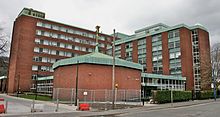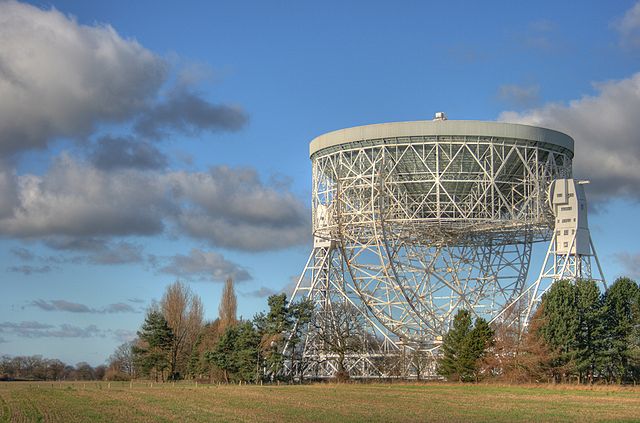Loading AI tools
From Wikipedia, the free encyclopedia
The Department of Physics and Astronomy at the University of Manchester is one of the largest and most active physics departments in the UK, taking around 250 new undergraduates and 50 postgraduates each year, and employing more than 80 members of academic staff and over 100 research fellows and associates.[2] The department is based on two sites: the Schuster Laboratory on Brunswick Street and the Jodrell Bank Centre for Astrophysics in Cheshire, international headquarters of the Square Kilometre Array (SKA).[3]
 The Schuster Laboratory, home to the Department of Physics and Astronomy | |
Former names | School of Physics and Astronomy (2004-2019) |
|---|---|
| Head of Department | Professor Christopher Parkes[1] |
| Location | , |
| Affiliations | Faculty of Engineering and Physical Sciences, University of Manchester |
| Website | physics |
According to the Academic Ranking of World Universities, the department is the 9th best physics department in the world and best in Europe.[4] It is ranked 2nd place in the UK by Grade Point Average (GPA) according to the Research Excellence Framework (REF) in 2021, being only behind the University of Sheffield.[5] The University has a long history of physics dating back to 1874, which includes 12 Nobel laureates,[6] most recently Andre Geim and Konstantin Novoselov who were awarded the Nobel Prize in Physics in 2010 for their discovery of graphene.[7][8]

The Department of Physics and Astronomy comprises eight research groups:
Research in the department of Physics has been funded by the Particle Physics and Astronomy Research Council (PPARC), the Science and Technology Facilities Council (STFC)[9] and the Royal Society.

As of 2015[update] the department employs 53 Professors, including Emeritus Professors.[10]

The department has origins dating back to 1874 when Balfour Stewart was appointed the first Langworthy Professor of Physics at Owens College, Manchester. Stewart was the first to identify an electrified atmospheric layer (now known as the ionosphere) which could distort the Earth's magnetic field. The theory of the ionosphere was postulated by Carl Friedrich Gauss in 1839, Stewart published the first experimental confirmation of the theory in 1878.[18] Since then, the department has hosted many award-winning scientists[18] including:
In 2004, the two separate departments of Physics at the Victoria University of Manchester and the University of Manchester Institute of Science and Technology (UMIST) were merged to form the current Department of Physics and Astronomy at the University of Manchester. The department was known as the School of Physics and Astronomy until a 2019 reshuffle.
The department is also home to several Emeritus Scientists, pursuing their research interests after their formal retirement including:
Seamless Wikipedia browsing. On steroids.
Every time you click a link to Wikipedia, Wiktionary or Wikiquote in your browser's search results, it will show the modern Wikiwand interface.
Wikiwand extension is a five stars, simple, with minimum permission required to keep your browsing private, safe and transparent.